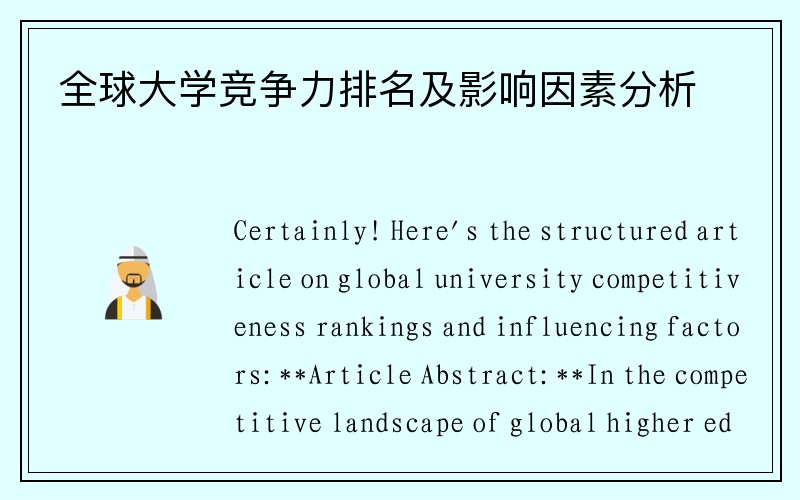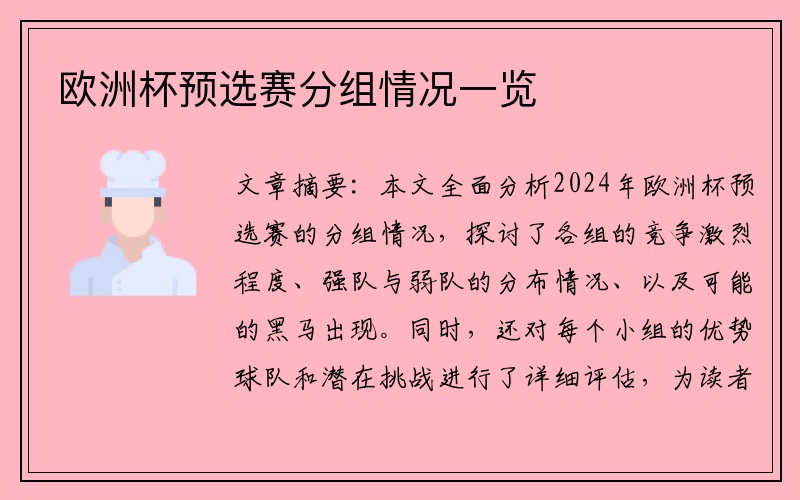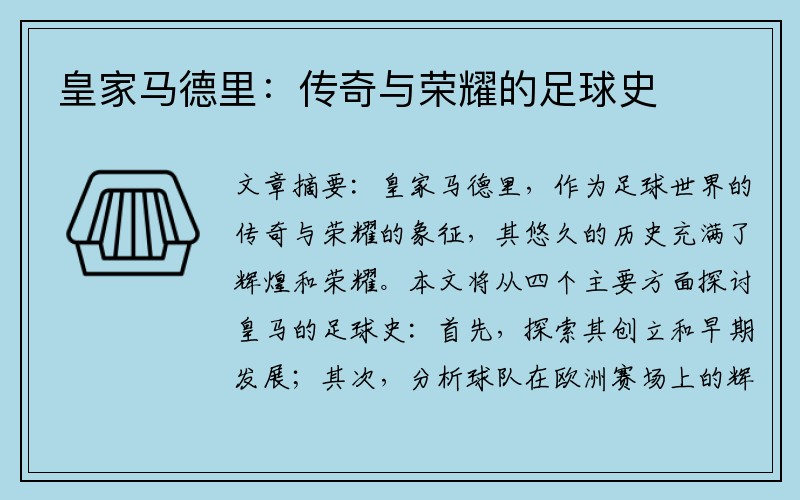Certainly! Here's the structured article on global university competitiveness rankings and influencing factors:
**Article Abstract:**
In the competitive landscape of global higher education, university rankings serve as the ultimate benchmark of institutional prestige and influence. This article explores the intricate dynamics behind these rankings, delving into the methodologies, key influencing factors, strategic implications, and the evolving challenges faced by universities worldwide. By dissecting these elements, it offers a comprehensive view of how rankings shape the educational landscape and institutional strategies in the pursuit of excellence.

---
1、Methodologies of Global University Rankings
Global university rankings are pivotal benchmarks influencing academic and institutional reputation. They typically incorporate various metrics such as academic performance, research output, faculty qualifications, and international diversity. The methodologies employed by ranking agencies like QS, Times Higher Education, and Shanghai Ranking System differ significantly, emphasizing distinct aspects of university excellence. For instance, QS emphasizes academic reputation and employer reputation alongside research metrics, while THE places greater weight on research impact and international outlook.
k1体育娱乐平台These methodologies not only highlight institutional strengths but also spark debates on metrics' validity and relevance. Critics argue that rankings often prioritize research output over teaching quality and societal impact, potentially skewing institutional priorities. Nevertheless, rankings remain influential in guiding prospective students, faculty recruitment, and international collaborations, shaping universities' strategic directions.
Understanding these methodologies is crucial for universities aiming to enhance their global standing and strategic positioning in the competitive academic arena.
2、Key Influencing Factors Behind Rankings
Behind the numerical rankings lie multifaceted influencing factors that shape institutional success and recognition on a global scale. Academic reputation stands tall as a cornerstone, influenced by faculty expertise, scholarly publications, and academic collaborations. Research output, measured by publications and citations, not only signifies intellectual contributions but also drives institutional prestige.
Moreover, internationalization plays a pivotal role, fostering global partnerships, cultural diversity, and collaborative research initiatives. Universities actively seek international faculty and student exchanges, enhancing their global footprint and attractiveness to international stakeholders.
Financial resources and infrastructure investments also underpin competitiveness, facilitating cutting-edge research facilities, technological advancements, and innovation hubs. Strategic alliances with industry and government entities further bolster research capabilities and funding opportunities.
These factors collectively shape rankings and strategic decisions, emphasizing the intricate interplay between academic excellence, global engagement, and institutional resources.
3、Strategic Implications for Universities
Global university rankings exert profound strategic implications, driving institutions to prioritize areas of comparative advantage while addressing perceived weaknesses. High rankings enhance institutional visibility and attractiveness to prospective students, faculty, and donors, facilitating recruitment and fundraising efforts.
Strategically leveraging rankings involves aligning institutional strengths with ranking metrics, enhancing research productivity, fostering international collaborations, and improving teaching quality. Universities often undertake targeted initiatives to bolster areas of deficiency, such as faculty development programs, research funding initiatives, and student support services.
Furthermore, rankings influence policy decisions and funding allocations by governments and philanthropic organizations, shaping higher education landscapes regionally and globally.
Navigating these strategic implications requires a nuanced understanding of ranking methodologies, institutional capabilities, and global trends in higher education.
4、Challenges and Future Trends
Despite their utility, global university rankings face challenges and criticisms that warrant attention. Methodological inconsistencies and bias towards research output pose challenges for universities focusing on teaching excellence and societal impact. Moreover, rankings' influence on institutional priorities may inadvertently homogenize educational practices and discourage innovation.
Future trends indicate a growing emphasis on holistic metrics, encompassing teaching quality, societal impact, and sustainability initiatives. Universities are increasingly embracing transparency and accountability in reporting their contributions to societal well-being and sustainable development goals.
Addressing these challenges requires ongoing dialogue among stakeholders, including universities, ranking agencies, policymakers, and students, to ensure rankings accurately reflect institutional diversity and societal contributions.
Ultimately, navigating the complexities of global university rankings involves balancing institutional aspirations with societal expectations, fostering a dynamic educational landscape driven by excellence and innovation.
总结:
Global university rankings serve as pivotal benchmarks in the competitive landscape of higher education, influencing institutional strategies and global perceptions. By understanding ranking methodologies, key influencing factors, strategic implications, and emerging challenges, universities can strategically position themselves for global excellence. Embracing transparency, innovation, and holistic metrics will be crucial in navigating future trends and fostering a diverse, impactful higher education sector.
This structured approach provides a comprehensive exploration of global university competitiveness rankings and their underlying dynamics.


